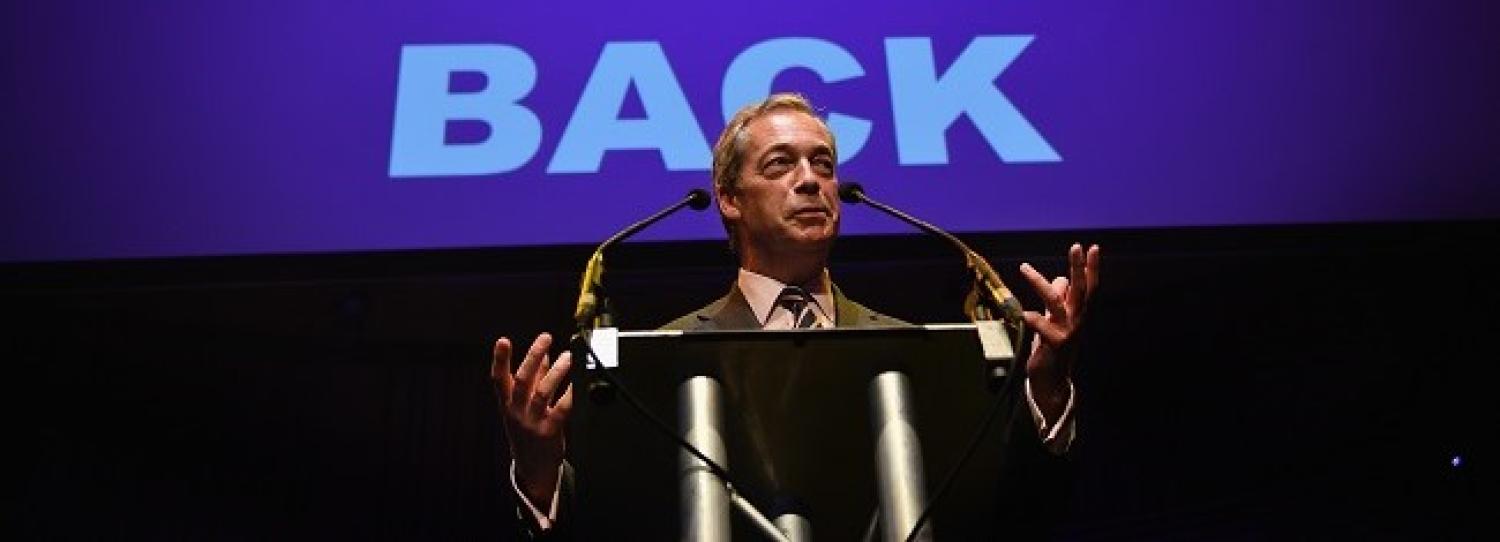If we believe a growing number of political commentators, we are currently witnessing the rebirth of fascism. Donald Trump, Vladimir Putin, Marine le Pen, Nigel Farage – they have all been compared to the likes of Italian fascist leader Benito Mussolini and even Adolf Hitler.
Closer scrutiny quickly reveals major differences between these present-day figures and fascism as a historical movement, as leading historian of fascism Robert Paxton and others have rightly pointed out. Putin is not a new Hitler, nor is Trump a new Mussolini, despite the fact that Trump blithely tweeted a Mussolini quote some time ago. After all, fascism today is used more often as a political insult than as a historically-informed analytical term.
Despite the shortcomings of these rather superficial historical allegories, the debate touches on deeper issues that plague our societies today and that have a historical dimension. The way present-day right-wing and populist leaders respond to increasing social tensions, economic inequalities and growing feelings of anxiety in a globalised world share some important features with the rise of fascism in the past century.
History is a valuable guide in gaining a deeper understanding of the threat these movements pose to liberal democracy.
As a historical phenomenon, fascism emerged in a Europe devastated by war, hunger and revolution. It originated in Italy in the early 1920s when social and political tensions, aggravated by what many Italians perceived as a 'mutilated victory', had reached boiling point. The political scene in Italy at the time was of a bewildering complexity: communists clashed with radical nationalists, futurists debated with liberals, not to mention all the smaller political groupings and activists.
Fascism arose from this diversity, drawing on socialism as well as radical nationalism, racism and anarcho-syndicalism. It promised national unity and greatness, but also workers' rights and the pursuit of the fight against 'international financial capitalism'. To overcome the deep social and economic tensions, it advocated excluding minorities and dissidents from the new 'national body'. [fold]
Its eclectic character, and emphasis on national unity to the detriment of minorities and dissidents, is where historical fascism echoes Trump's calls to 'make America great' and the Brexit campaigners' claim to 'take back control' of their country. There are striking similarities also in Putin's Russia and Marine le Pen's Front National, as well as in the alarming political shifts in Austria, Hungary, Turkey and other European countries.
Yet fascism went further. Its main instrument was violence, and its ideal was nothing less than the creation of the 'new man' to remould every aspect of society, culture and the economy by way of total state control. This is where the historical analogies become much more tenuous.
There are other, structural similarities between the present situation and the 1920s and 1930s that may be even more disturbing. Like right-wing populism today, historical fascism thrived in an environment of insecurity. The upheavals caused by the First World War, the Russian Revolution, and the Great Depression may, to an extent, be compared to the breakdown of the Soviet Union, the terrorist attacks of 9/11 and the global financial crisis in 2008. The rise of Vladimir Putin, the wars in Afghanistan and Iraq, the centrifugal forces that continue to plague the EU and Donald Trump are all backlashes emanating from polarised societies and uprooted political milieus.
Current right-wing leaders capitalise on the growing inability of nation-states to channel the negative effects of economic globalisation. They mobilise the widespread popular feelings of resentment and frustration, giving these a nationalist, xenophobic and anti-elitist twist. Hence, we witness the rise of politicians who promise to 'win back our country', settle international disputes by force and fence their states off against refugees and migrants. Building a wall between the US and Mexico or leaving the EU may seem like ridiculous ideas, but to many people, they also seem like actions that express their specific grievances. Such actions and plans target minority groups and the elites which are perceived to shape and dominate the distant global and transnational structures that threaten many ordinary people.
History demonstrates that, whether we call it fascist or not, parochial nationalism, aggressive unilateral foreign policy and high-tech walls are not solutions to the global political challenges of our time. Just like in the 1920s and 1930s, they instead threaten to lead us down a path of growing xenophobia, nationalist rivalries and economic recession.
Yet, as the recent successes of the anti-establishment movement shows, business as usual is also not a viable option. We do not simply need 'more' globalisation, 'more' Europe and 'more' of the UN – we need political and democratic structures to grow out of their national confines and finally catch-up with economic globalisation.
Ultimately, the past does not provide a simple answer to the challenge Trump, Putin and the others pose to liberal democracy. It suggests that to effectively counter the resurgence of 'neo-fascist' politics — and to prevent it from causing more damage than it has already done — we need to address the problem of global insecurities not on a national but on a transnational and indeed global level, and one that is not limited to neoliberal economic doctrines and bureaucratic rationale, but one that rests firmly on democratic procedures and structures. This should help us address the negative and polarising effects of economic globalisation and take the wind out of the sails of populists tweeting Mussolini quotes.
Photo by Jeff J Mitchell/Getty Images
